#Microbial bioremediation
Text

Unraveling the Depths of Bioaugmentation and Biostimulation: A Comprehensive Comparison
Introduction:
If you've ever delved into the field of environmental biotechnology, you've likely stumbled across the terms "bioaugmentation" and "biostimulation". These sophisticated approaches to environmental remediation are both aimed at enhancing natural processes to treat contamination. But what exactly distinguishes one from the other? In this article, we will delve into the specifics of Bioaugmentation vs Biostimulation, breaking down their definitions, applications, and key differences.
Understanding Bioaugmentation:
Bioaugmentation, in its simplest form, is the introduction of a group of natural microbial strains or a genetically engineered variant into an environment to enhance the rate of pollutant degradation. These microbial strains, often referred to as 'augments', are known for their specialized ability to degrade contaminants that the existing microbial community cannot effectively handle. This technique is frequently employed to address the contamination of soil and water bodies with organic pollutants such as oil spills and certain types of industrial waste.
Diving into Biostimulation:
On the other hand, biostimulation involves the stimulation of indigenous microbial communities already present in the environment by providing nutrients, electron acceptors, or substrates that enhance their activity. Unlike bioaugmentation that adds new organisms to an ecosystem, biostimulation works with the existing microbial population, encouraging their growth and pollutant degradation capabilities. Often used in environmental cleanup efforts, biostimulation can enhance the breakdown of a broad range of pollutants, including petroleum hydrocarbons and heavy metals.
Bioaugmentation Vs Biostimulation: A Comparative Study:
Now that we understand the fundamentals of both processes, it's time to compare them head-to-head.
Techniques Involved: While bioaugmentation is about introducing specific microbial strains to boost pollutant degradation, biostimulation works by providing necessary nutrients or substrates to stimulate the indigenous microbial population.
Scope of Application: Both techniques are used in environmental remediation, especially for soil and groundwater. Bioaugmentation has a slight edge in cases where specific contaminants require particular microbial strains for degradation. Biostimulation, however, is often favored for broader applications, given that it enhances the overall microbial activity and not just that of specific strains.
Economic Aspects: Bioaugmentation requires the cultivation and addition of specific microbial strains, which can be costly and technically demanding. On the contrary, biostimulation usually involves adding relatively inexpensive nutrients or substrates, making it a more economically feasible option in many cases.
Environmental Impact: Bioaugmentation involves adding new organisms, which raises concerns about the impact on the existing ecosystem and the potential for creating imbalances. Biostimulation, working with existing microbial communities, is generally viewed as having a less disruptive impact on ecosystem balance.
Effectiveness: Both techniques have proven effective in various scenarios, but their success heavily depends on site-specific conditions. For instance, bioaugmentation's effectiveness might be hindered by the inability of the added microbes to survive in the new environment. Biostimulation's success, on the other hand, could be limited by the potential growth of undesired microbial communities.
Conclusion:
Bioaugmentation and biostimulation, though conceptually distinct, share a common goal: to utilize biological processes for environmental remediation. Choosing between them demands a clear understanding of the contamination at hand, the existing microbial community, and the economic and environmental implications of each approach. As scientists continue to explore these fascinating techniques, our ability to heal the environment using nature's own tools will only continue to improve.
#Bioaugmentation#Biostimulation#Bioremediation technologies#Environmental Remediation#Pollution control methods#Bioaugmentation vs Biostimulation#Benefits of bioaugmentation#Benefits of biostimulation#Bioaugmentation in habitat restoration#Biostimulation for pollution control#Limitations of bioaugmentation#Limitations of biostimulation#Bioaugmentation-assisted biostimulation#Microbial bioremediation#Sustainable environmental practices#Choosing between bioaugmentation and biostimulation#Understanding bioaugmentation#Understanding biostimulation#Industrial waste management#Oil spill cleanup techniques
5 notes
·
View notes
Text
This can help them identify opportunities and potential threats, so they can prepare for the present and future. MRI Research helps organizations to figure out whats happening in a given industry, including demand and supply statistics, degree of competition, state of competition with other emerging industries, future prospects considering technological changes, and external factors on the industry.
0 notes
Text

Bioaugmentation Versus Biostimulation: Decoding Key Environmental Bioremediation Strategies
Introduction
Bioaugmentation and biostimulation stand as revolutionary strategies in the realm of environmental biotechnology. How do these terms define themselves and what sets them apart?
An In-Depth Look into Bioaugmentation and Biostimulation
Bioaugmentation and biostimulation, both employing living organisms, play pivotal roles in purifying polluted environments, be it soil or water. However, their modus operandi in achieving this feat greatly varies.
Delving into Bioaugmentation
Let's first navigate through the fascinating world of bioaugmentation.
Bioaugmentation Explained: Definition and Procedure
Bioaugmentation involves introducing specially cultured microorganisms to a polluted environment to expedite the degradation of pollutants. Think of it as adding specific ingredients (including microbes) into a bread recipe – by controlling the components, environmental experts can predict the outcome.
Why Choose Bioaugmentation: Key Advantages
Bioaugmentation opens up the possibility to degrade a diverse array of pollutants, thereby enhancing the pace of pollution degradation.
Bioaugmentation: Identifying the Challenges
Despite its benefits, bioaugmentation faces certain hurdles. The primary drawback is the higher cost involved in introducing a culture compared to simply adding nutrients.
Unfolding the Concept of Biostimulation
Now, let's shift our focus to biostimulation.
Unraveling Biostimulation
Biostimulation is a process where nutrients and other substances are added to boost the growth of native microorganisms, thereby aiding in the degradation of pollutants. It's akin to providing an energy drink to the local cleanup team!
Why Opt for Biostimulation: Core Advantages
Biostimulation capitalizes on existing microbial communities, causes less disturbance to the ecosystem, and proves efficient in treating large-scale contaminations.
Understanding Biostimulation Limitations
However, biostimulation has its drawbacks, such as unpredictable outcomes and a longer duration for the degradation process compared to bioaugmentation.
Bioaugmentation and Biostimulation: A Side by Side Comparison
Next, we draw a comparison between these two strategies.
Common Ground
Both strategies share a common goal - degrading pollutants through microorganisms. Moreover, they are generally more eco-friendly and sustainable than their chemical counterparts.
Crucial Distinctions
The fundamental distinction lies in their respective strategies - bioaugmentation introduces new microorganisms, while biostimulation boosts the activity of existing ones.
Case Studies: Witnessing Bioaugmentation and Biostimulation at Work
Imagine an oil spill scenario. Here, bioaugmentation might involve introducing oil-consuming bacteria, while biostimulation might add nutrients to spur the growth of local oil-consuming bacteria.
Deciding Between Bioaugmentation and Biostimulation
Selecting between these two strategies hinges on multiple factors, including the type of pollution, site characteristics, and available resources.
Looking Ahead: The Future of Bioaugmentation and Biostimulation
As the quest for sustainable and effective pollution control continues, the significance of both bioaugmentation and biostimulation is set to rise.
Conclusion
Although different in their approach, both bioaugmentation and biostimulation serve as instrumental tools in combating environmental pollution. Comprehending these differences is integral for informed decision-making in the field of environmental bioremediation.
#Bioaugmentation#Biostimulation#Environmental Bioremediation#Pollution Control#Bioremediation Techniques#Sustainable Pollution Cleanup#Bioaugmentation vs Biostimulation#Microbial Pollution Degradation#Biotechnology Solutions#Eco-friendly Remediation Techniques
0 notes
Text








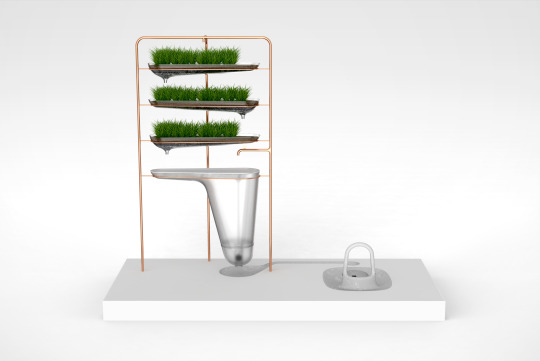

#123#design#plastic#bioremediation#waste remediation#biogas#food#sustainability#philips microbial home#dezeen
0 notes
Text
https://www.ecowatch.com/forever-chemicals-cleanup-science.html
Researchers from Texas A&M AgriLife of Texas A&M University have developed a new bioremediation technology using plant-based material and fungi that could take care of cleaning up per- and polyfluoroalkyl substances. These pollutants, also called “forever chemicals” or PFAS, are found in soil, water, and even human and animal blood and may be harmful to humans and other species.
PFAS are found just about everywhere, from food wrappers and dental floss to clothing and electrical wire insulation. While more research is needed on health implications from PFAS exposure, the CDC notes that these chemicals may affect development, reproduction and the immune system and may cause liver damage. Extremely high exposures of PFAS may also be linked to cancer.
“PFAS do not degrade easily in the environment and are toxic even at trace level concentrations,” said Susie Dai, associate professor in the Texas A&M Department of Plant Pathology and Microbiology. “They must be removed and destroyed to prevent human exposure and negative impacts on the ecosystem. PFAS are so stable because they are composed of a chain of carbon and fluorine atoms linked together, and the carbon-fluorine bond is one of the strongest chemical bonds. They can occur in water at a very low concentration and you have to concentrate them and then destroy them.”
The only way to actually get rid of these “forever chemicals” is by burning them, which is a lengthy and expensive process. After incineration, other products, like active carbon, are used to finally clean up the PFAS.
But Texas A&M researchers have found a new way to use a plant-based material that adsorbs the pollutants. As explained by ScienceDirect, adsorption is “The use of solids for removing substances from either gaseous or liquid solutions.” The adsorbent material is then consumed by microbial fungi. The team recently published their findings for the process framework, which they call Renewable Artificial Plant for In-situ Microbial Environmental Remediation (RAPIMER), in Nature.
“The plant’s cell wall material serves as a framework to adsorb the PFAS,” Dai explained. “Then this material and the adsorbed chemical serve as food for a microbial fungus. The fungus eats it, it’s gone, and you don’t have the disposal problem. Basically, the fungus is doing the detoxification process.”
This sustainable PFAS clean-up system could scale for commercial use, leading to a better way to remove these chemical pollutants from the environment. It could also come in handy as the U.S. Environmental Protection Agency considers creating PFAS thresholds to its water quality standards, which will require municipal water treatment plants to find cost-effective solutions to monitor and remove PFAS from the water if necessary.
6 notes
·
View notes
Text
What are the uses of Lab Fermenter across Industries?
Introduction:
Lab fermenters, often overshadowed by their industrial counterparts, are unsung heroes in the realm of scientific research and innovation. These versatile apparatuses, with their ability to create controlled environments for microbial growth, find applications across a wide spectrum of industries. Join me as we explore the myriad uses of lab fermenters and how they contribute to advancements in medicine, biotechnology, food production, and beyond.
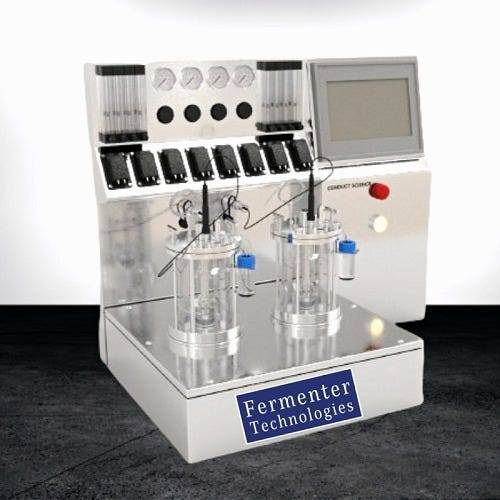
Pharmaceutical Research and Development:
Lab fermenters play a crucial role in pharmaceutical R&D by facilitating the production of various therapeutic compounds.
They are used for culturing microorganisms that produce antibiotics, antiviral drugs, and anticancer agents.
Fermenters enable researchers to optimize culture conditions, increase yields, and develop new drug candidates.
Biotechnology and Bioengineering:
In biotechnology, lab fermenters are indispensable for producing biofuels, enzymes, and biochemicals through microbial fermentation.
They serve as miniaturized bioreactors for engineering microorganisms to produce valuable compounds such as insulin, vaccines, and industrial enzymes.
Fermenters enable the scale-up of bioprocesses from laboratory to industrial scale, facilitating commercialization.
Food and Beverage Production:
The food and beverage industry relies on lab fermenters for the development and production of various fermented products.
Fermenters are used to culture starter cultures for cheese, yogurt, and fermented meats, ensuring product consistency and quality.
They facilitate the fermentation of beer, wine, and spirits, allowing brewers and vintners to experiment with different yeast strains and fermentation parameters.
Environmental and Waste Treatment:
Lab fermenters are employed in environmental biotechnology for bioremediation and waste treatment applications.
Microorganisms cultivated in fermenters are utilized to degrade pollutants, detoxify hazardous waste, and convert organic matter into valuable products.
Fermentation processes can be optimized in lab-scale reactors before implementing large-scale bioremediation projects.
Academic and Research Institutions:
Lab fermenters serve as essential tools for academic research, allowing scientists to investigate fundamental principles of microbiology and bioprocess engineering.
They provide hands-on training for students studying biotechnology, bioengineering, and related fields.
Fermentation experiments conducted in lab-scale reactors contribute to the advancement of scientific knowledge and the development of new technologies.
Conclusion:
Lab fermenters may be modest in size, but their impact on scientific research and industrial innovation is immense. From producing life-saving drugs to crafting artisanal cheeses, these versatile devices continue to shape diverse industries and drive advancements in science and technology. As we continue to explore the frontiers of microbial fermentation, lab fermenters will remain indispensable tools for unlocking the full potential of microorganisms and harnessing their transformative power.
#Lab fermenters#Lab fermenter manufacturer#Lab fermenters manufacturer in India#Lab fermenters supplier in India
1 note
·
View note
Text
Bioremediation Technology and Services Market: Reviving Ecosystem
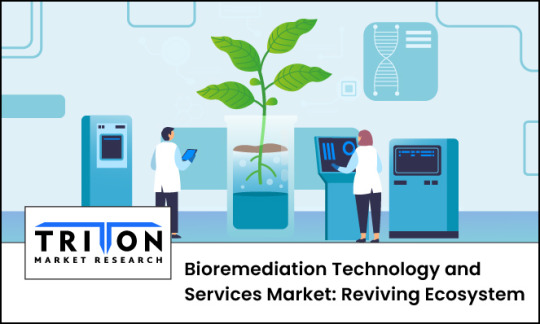
As per the International Energy Agency, in 2022, global CO2 emissions from energy combustion and industrial processes increased by 0.9%, reaching a record high of 36.8 gigatonnes (Gt) .
Thus, a pivotal question emerges: What solution can effectively mitigate the environmental impact of industrial activities?
The alarming rise in emission levels has spurred a robust demand for bioremediation technologies and services. The bioremediation process uses natural organisms, primarily microbes, to break down hazardous substances into less toxic or non-toxic materials. It is an essential eco-friendly technology that harnesses the power of biological processes to mitigate environmental pollution. Accordingly, the Global Bioremediation Technology and Services Market is expected to advance at a CAGR of 7.97% during the 2024-2032 forecast period.
Bioremediation Technology and Services Market: Key Services in the Spotlight
From oil spill management to the restoration of urban brownfields, bioremediation techniques are being deployed worldwide to address a wide array of environmental issues. This widespread utilization underscores the versatility and effectiveness of bioremediation solutions in combating pollution, propelling the market forward.
Among the various services offered within the market, three have gained significant traction due to their critical importance and effectiveness:
Soil Remediation: As industrial contaminants increasingly compromise soil health, soil remediation has become a pivotal service. It involves various techniques to detoxify soils affected by chemical spills, industrial waste, and agricultural runoffs, thereby supporting ecological restoration and sustainable agriculture. Additionally, biochar can enhance bioremediation processes by providing a stable habitat for microbial communities that degrade pollutants. Its ability to improve soil properties, such as pH and moisture retention, further supports these microbial activities.
Recent advancements in bioremediation, particularly bioaugmentation for soil, have proven highly effective for degrading organic pollutants like petroleum hydrocarbons. This method not only reduces cleanup times but is also cost-effective. Its successful application across various contaminated sites highlights its versatility and efficiency in environmental restoration efforts.
Wastewater Remediation: This service is crucial for treating water bodies contaminated with industrial discharges, urban runoff, and sewage. The use of bioremediation processes in wastewater treatment helps in efficiently reducing pollutants, thus ensuring water safety and sustainability.
In one of its projects, Advanced BioTech employed BioWorld Liquid Optimizer and Hydrocarbon Digesting Microbes to oily wastewater in a tractor repair facility.
Oilfield Remediation: With the ongoing global reliance on fossil fuels, managing oil spillage and leaks is paramount. Bioremediation techniques used in oilfield remediation offer a potent solution for decomposing hydrocarbons, significantly minimizing environmental impacts.
Additionally, the use of microalgae in these processes not only supports the growth of oil-degrading bacteria but also directly engages in breaking down hydrocarbons through their metabolic processes. This dual role makes microalgae a promising tool in oil spill remediation, offering a more sustainable and less invasive alternative to traditional chemical methods.
Connect with our experts for a simplified analysis!
Asia-Pacific: A Dynamic Region in Bioremediation Market
The Asia-Pacific bioremediation technologies and services market is anticipated to witness the fastest growth, expected to attain a CAGR of 8.65% during 2024-2032. This growth is primarily driven by rapid industrialization and heightened environmental regulations. Countries such as China and India are leading the way, with significant investments in bioremediation research and the implementation of large-scale remediation projects. For example, China's commitment to remediate urban industrial sites has catalyzed the adoption of advanced bioremediation solutions, making it a key player in the regional market.
Looking Ahead: Innovations and Product Developments
Recent advancements in bioremediation technologies display innovative approaches to enhancing efficacy and application scopes. Notable developments include genetically engineered microbes with heightened capabilities to degrade specific pollutants and novel bioremediation products to tackle complex contaminations, including plastic waste. For instance, a recent breakthrough in 2023 involved the development of a microbial consortium capable of degrading polyethylene plastics, which constitute a significant portion of marine litter.
The bioremediation market is set to evolve with a focus on developing more targeted and efficient microbial agents, expanding the scope of pollutants that can be addressed. This progression will help tackle emerging contaminants while paving the way for more personalized and precise environmental remediation strategies.
Explore Our Latest Release for the 2024-2032 Market Analysis
FAQs:
Q1) What is bioremediation?
Bioremediation is a process that uses natural organisms to break down hazardous substances into less toxic or non-toxic materials.
Q2) Why is bioremediation important?
Bioremediation plays a critical role in managing environmental pollution by providing sustainable and effective methods to detoxify contaminated sites, thus helping to restore ecological balance and public health.
Q3) How does bioremediation help the environment?
Bioremediation helps the environment by reducing pollution levels, rehabilitating contaminated ecosystems, and promoting the recycling of waste materials into beneficial compounds.
0 notes
Text
Detailed Report on Continuous Bioprocessing Market | BIS Research

Continuous bioprocessing is a paradigm shift in the field of biomanufacturing, revolutionizing the way biological products such as pharmaceuticals, enzymes, and biofuels are produced.
The Global Bioprocessing Market was valued at $250.1 million in 2023 and is expected to reach $1,639.1 million by 2033, growing at a CAGR of 20.68% between 2023 and 2033.
Continuous Bioprocessing Overview
Continuous Bioprocessing forms the foundational phase in the production of biopharmaceuticals, encompassing a series of interconnected steps that initiate with the selection of host organisms and culminate in the production of viable cell cultures or microbial systems.
Grab the free sample page click here
Key Elements for Continuous Bioprocessing
Host Organism Selection
Cell Culture and Development
Gene Cloning and Vector Design
Cell Expansion and Bioreactor Cultivation
Key Advantages for Global Continuous Bioprocessing
Increased Productivity
Improved Quality Control
Reduced Footprints and Capital Costs
Enhanced Process Understanding
Market Drivers for Continuous Bioprocessing Market
Market drivers are as follows
Increasing demand for biopharmaceuticals
Need for Cost Reduction and Process Intensification
Advancements in Bioprocess Technology
Focus on Flexibility and Scalability
Environmental Sustainability
These market drivers collectively contribute to the growing adoption and expansion of the continuous bioprocessing market
Applications for Continuous Bioprocessing Market
Biopharmaceutical Production
Vaccine Production
Enzyme Production
Cell and Gene Therapy
Bioremediations
These applications highlight the versatility and importance of Continuous Bioprocessing across various industries, driving innovation, sustainability, and economic growth through the production of biologically derived products and materials.
Recent Developments in the Bioprocessing Market
• Waters and Sartorius expanded their partnership to develop integrated analytical tools for downstream biomanufacturing following their successful collaboration in upstream processes.
• Sartorius and Repligen Corporation launched an integrated system with Biostat STR and XCell ATF for upstream process intensification.
Visit our Life Sciences and Biopharma Vertical page for better understanding
Key Players in the market
• 3M
• Bio-Rad Laboratories, Inc.
• Thermo Fisher Scientific, Inc.
• Merck KGaA
• Sartorius AG
• Danaher Corporation
Key Questions Answered
Q What is the estimated global market size for the Continuous Bioprocessing Market ?
Q What future trends are expected in the Continuous Bioprocessing Market ?
Q What does the supply chain of the Continuous Bioprocessing Market look like?
QWhat does the value chain of the Continuous Bioprocessing Market look like?
Q What is the regulatory framework within the Continuous Bioprocessing Market ?
Q What is the patent analysis trend based on country and year in the Continuous Bioprocessing Market ?
Q How has the COVID-19 outbreak affected the future trajectory of the Continuous Bioprocessing Market ?
Q What are the next frontiers in the Continuous Bioprocessing Market ?
Conclusion
In conclusion, the global continuous bioprocessing landscape is poised for remarkable growth and innovation, driven by a convergence of market drivers, technological advancements, and expanding applications across diverse industries.
As the demand for biopharmaceuticals, vaccines, enzymes, cell and gene therapies, and sustainable biofuels continues to rise, continuous bioprocessing stands at the forefront, providing scalable, cost-effective, and sustainable solutions to meet these evolving needs.
0 notes
Text
Dealing with High Toxicity Levels in Wastewater: Exploring solutions for treating using biological treatment methods and mitigating their harmful effects.
Despite doubts surrounding the efficiency of biological effluent treatment plants, delve into five transformative methods of biological solutions to fight high toxicity levels in industrial wastewater
Despite the commendable mark made by biological effluent treatment plants as eco-friendly solutions for industrial wastewater, suspicion looms over their capacity to effectively fight high toxic pollutants.
This concern becomes particularly pronounced in industries dealing with diverse byproducts, such as textiles, which rank among the top contributors to water pollution. Textile industries, reputed for their extensive use of chemicals, dyes, and bacteria, pose a unique challenge in wastewater management.
In this context, delving into five powerful biological solutions tailored to handle the formidable task of mitigating extremely high toxic pollutants prevalent in industrial wastewater becomes imperative.
Let's navigate the landscape of these solutions and explore their potential to revolutionize the treatment of industrial effluents
Bioremediation Techniques:
One of the most crucial way to deal with high toxicity levels in the world of modern wastewater treatment is the implementation of bioremediation techniques.
This process employs microorganisms, including bacteria, fungi, or algae, to effectively break down and metabolize toxic compounds, transforming them into less harmful substances. The beauty of bioremediation lies in its adaptability, biological agents can be either specifically selected or engineered to target particular pollutants, providing a sustainable and environmentally friendly solution.
By harnessing the power of nature's microorganisms, this method not only addresses the immediate concern of toxic wastewater but also aligns with the principles of eco-friendly and efficient wastewater treatment.
Constructed Wetlands:
In addressing the challenge of high toxicity levels in wastewater, the utilization of constructed wetlands emerges as a powerful and effective biological treatment method.
These engineered artificial wetland systems capitalize on natural processes, including microbial activity, plant uptake, and sedimentation, to systematically remove contaminants from wastewater. The carefully curated ecosystem within these constructed wetlands, featuring selected natural soils and aquatic plants, plays a pivotal role in breaking down toxic substances and enhancing water quality.
Phytoremediation:
Phytoremediation emerges as a noteworthy biological treatment method for combating high toxicity levels in wastewater. This technique harnesses the unique capabilities of plants to absorb, accumulate, and detoxify pollutants from the water.
Specifically selected plant species after evaluation of toxic substances present in waste water, known for their ability to tolerate and accumulate high levels of toxic substances, play a crucial role in this remediation process.
Once these plants have fulfilled their detoxification duty, they are harvested and appropriately disposed of, ensuring the effective removal of contaminants from the environment. Phytoremediation, with its reliance on the natural power of plants, stands as a sustainable and environmentally friendly solution in the quest to mitigate the harmful effects of toxic pollutants in wastewater.
Bioaugmentation:
In the realm of wastewater treatment, bioaugmentation emerges as another powerful strategy to handle high toxicity levels. This method involves the introduction of specialized microorganisms into the wastewater treatment system, aiming to enhance its capacity to degrade toxic compounds.
The added microorganisms act as reinforcements, suppressing the existing microbial community with specific enzymes that contribute to a more efficient breakdown and elimination of toxic pollutants which makes bioaugmentation stands as a very targeted and effective biological treatment method to eliminate the high toxic levels present in waste water
Monitoring and Adaptive Management:
In the world of wastewater treatment among high toxicity challenges, continuous monitoring becomes crucial for success. Employing biological treatment methods necessitates a vigilant approach to toxicity levels and the efficacy of chosen strategies.
Adopting an adaptive management framework allows for real-time adjustments based on accurate data, ensuring the treatment process remains optimized. Regular assessments not only contribute to the ongoing refinement of the chosen biological methods but also facilitate the swift identification of emerging challenges. This dynamic and proactive approach not only enhances the overall effectiveness of wastewater treatment but also ensures a sustainable, long-term solution to combat the harmful effects of high toxicity levels in water resources.
Conclusion:
In the realm of wastewater treatment, addressing high toxicity levels requires a multifaceted approach grounded in powerful biological solutions. These approaches collectively stand as a testament to the potential of biological treatment methods in reshaping the landscape of industrial effluent treatment and ensuring sustainable, eco-friendly practices in wastewater management.
0 notes
Text

Bioremediation: An Innovative Approach to Environmental Restoration
Bioremediation is a fascinating, innovative field of environmental science that seeks to harness the natural abilities of organisms to break down hazardous substances into less toxic or non-toxic substances. This process is instrumental in treating contaminated soil, water, and air, making it a crucial component in our fight against environmental pollution.
What is Bioremediation?
Bioremediation utilizes living organisms, most notably bacteria, fungi, and plants, to degrade, transform, or detoxify contaminants present in the environment. These microorganisms use the contaminants as an energy source, breaking them down into simpler, non-toxic compounds. This process is advantageous as it can potentially restore polluted environments to their natural states without the need for harmful chemical or physical treatments.
Types of Bioremediation
Bioremediation can be classified into two main types: in situ bioremediation and ex situ bioremediation.
In situ Bioremediation
In situ bioremediation involves treating the contaminated material at the site. The process takes advantage of naturally occurring microbial communities that can metabolize the contaminants. Various methods can be employed to stimulate the microbial activity, such as introducing nutrients, oxygen, or other factors necessary for the microbes' metabolism.
Ex situ Bioremediation
Ex situ bioremediation, on the other hand, involves removing the contaminated material from the site and treating it elsewhere. This process might involve physical methods like soil excavation or pumping out contaminated groundwater, followed by treatment in bioreactors where conditions are controlled to maximize biodegradation.
Microbial Bioremediation and Its Significance
Microbial bioremediation is the use of microorganisms to degrade environmental contaminants into less toxic forms. This is a significant aspect of bioremediation because microorganisms can adapt to different environmental conditions and break down a wide range of organic compounds. They are especially effective in the bioremediation of soil and water contaminated with hazardous substances like hydrocarbons, heavy metals, and pesticides.
Bioremediation of Hydrocarbons, Soil, Water, and Wastewater
Bioremediation can address various types of environmental pollution. For instance, bioremediation of hydrocarbons involves using microbes that can degrade these compounds, which are common pollutants in oil spills.
In the case of soil bioremediation, microbes or plants are used to degrade or immobilize contaminants, restoring the soil's health and fertility. This method is particularly effective in treating soils contaminated with heavy metals, oil spills, or industrial waste.
Bioremediation of water and wastewater involves using microorganisms or plants to degrade or absorb contaminants, reducing their concentrations to acceptable levels. This process can be particularly useful for treating industrial wastewater, which often contains a wide range of pollutants that can harm ecosystems and human health.
The Bioremediation Process and Its Principle
The bioremediation process relies on the principle that living organisms, primarily bacteria and fungi, can use contaminants as a source of energy and nutrients. These organisms metabolize the contaminants, breaking them down into simpler, non-toxic compounds, such as water and carbon dioxide.
However, the effectiveness of bioremediation depends on several factors, including the type and concentration of the contaminant, the presence of suitable microbial populations, and environmental conditions such as temperature, pH, and nutrient availability.
Bioremediation Companies
Several bioremediation companies have emerged in recent years, offering a variety of services, including site assessment, bioremediation plan design, and implementation. These companies utilize a range of techniques and approaches, including both in situ and ex situ methods, and often tailor their strategies to the specific needs and conditions of each site.
In conclusion, bioremediation is a highly promising technique for dealing with environmental contaminants, offering a more sustainable and eco-friendly alternative to traditional remediation methods. It leverages the metabolic abilities of microbes to break down pollutants into harmless substances, helping to restore contaminated environments to their natural states.
From in situ to ex situ methods, and from soil and water remediation to treatment of hydrocarbons and wastewater, bioremediation encompasses a wide range of applications. Its effectiveness, however, depends on several factors, including the nature of the contaminant, the presence of suitable microbial populations, and the specific environmental conditions.
Bioremediation companies play a pivotal role in this sphere, offering specialized services to assess, design, and implement bioremediation strategies. Their work is instrumental in harnessing the power of nature to mitigate the impact of human activities on the environment.
As our understanding of microbial ecology and environmental science continues to evolve, so too will our ability to harness the power of bioremediation. Its potential for restoring and preserving our environment makes it a crucial tool in our ongoing efforts to create a more sustainable and healthier world.
#bioremediation#environmental restoration#microbial bioremediation#in situ bioremediation#ex situ bioremediation#hydrocarbon bioremediation#soil bioremediation#water and wastewater bioremediation#bioremediation companies#environmental contaminants#microbial ecology#sustainable environment#environmental science
0 notes
Text
0 notes
Text

Contrasting Bioremediation Techniques: Spotting the Differences
Remediation is the process of removing contamination from water and soil, and bioremediation is a subset of this process that involves the use of living organisms to eliminate harmful pollutants in contaminated areas. Bioremediation techniques can be confusing, as some methods stimulate naturally occurring organisms to break down toxic chemicals and pathogens, while others introduce microorganisms into the environment to achieve remedial goals. There are two types of bioremediation techniques: biostimulation and bioaugmentation. These should not be confused with the two main methods of soil remediation (in-situ/ex-situ), which refer to how a remediation treatment is carried out and not the actual biology involved.
Biostimulation techniques encourage natural organisms to consume pollutants. Normally, these naturally occurring microorganisms could take decades to degrade contaminants, but by modifying the environment through the addition of nutrients, this time can be reduced. Nutrients and electron acceptors such as phosphorus, nitrogen, oxygen, or carbon are added to the environment to stimulate biodegradation. Examples of biostimulation techniques include biosparging and bioventing. Bioventing is the injection of high-pressure air (oxygen) into the soil or unsaturated vadose zone to enhance aerobic biodegradation. Biosparging is the injection of air into the saturated zone of the soil matrix or groundwater table to stimulate degradation.
Bioaugmentation involves the addition of exogenous microbial strains to supplement the degradation capacity of indigenous microbial populations. Site assessments are conducted to determine the chemical structure and concentration of contaminants, the size and nature of existing microbial populations, and the nature of the physical environment before the right bioaugmentation technique can be conducted. Effective bioaugmentation technology must be able to maintain genetic stability and viability during storage, survive in foreign and hostile environments, effectively compete with indigenous microorganisms, and move through the pores of the sediment to the contaminants. Nutrient application alone will not produce the desired remediation results, but augmenting contaminated soils with aggressive bacteria will often produce desired results in as little as 30 days.
While both techniques have applications in the remediation industry, bioaugmentation reduces the risk and uncertainty often associated with biostimulation. Delta Remediation is a worldwide leader in the area of bioremediation, offering proprietary remediation technology (BioLogix) and innovative solutions (ScreenLogix Rapid TPH Test) to meet site needs. To learn more, contact Delta Remediation at [email protected] or 780-962-7991.
#bioremediation#biostimulation#bioaugmentation#environmental science#soil remediation#microbial populations#contaminated areas#pollutants#indigenous microorganisms#exogenous microbial strains#Delta Remediation#BioLogix#ScreenLogix Rapid TPH Test.
0 notes
Text
Microbial Solutions for Environmental Remediation and Sustainable Practices
In the realm of environmental stewardship, the role of microbial solutions in remediation and sustainable practices cannot be overstated. Manufacturers specializing in various types of bacteria play a pivotal role in providing biodegradable solutions for the degradation of oil, grease, and other contaminants in diverse settings. From oil and grease degrading bacteria aiding in environmental restoration to nitrogen-fixing bacteria supporting sustainable agriculture, and from bioremediation bacteria facilitating pollution cleanup to specialized bacteria for wastewater treatment, these manufacturers offer potent microbial formulations tailored to address specific environmental challenges. Through their efforts, they contribute to the preservation of ecosystems, the protection of water resources, and the promotion of sustainable development worldwide.
Oil and Grease Degrading Bacteria Manufacturers: Manufacturers specializing in oil and grease degrading bacteria play a crucial role in environmental remediation by providing biodegradable solutions for the breakdown of oil and grease contaminants in various settings. These bacteria are specifically engineered or selected for their ability to metabolize hydrocarbons, effectively degrading oil and grease pollutants in soil, water, and industrial wastewater. By offering products containing potent strains of oil and grease degrading bacteria, manufacturers contribute to the restoration of polluted environments and the prevention of environmental harm caused by oil and grease contamination.
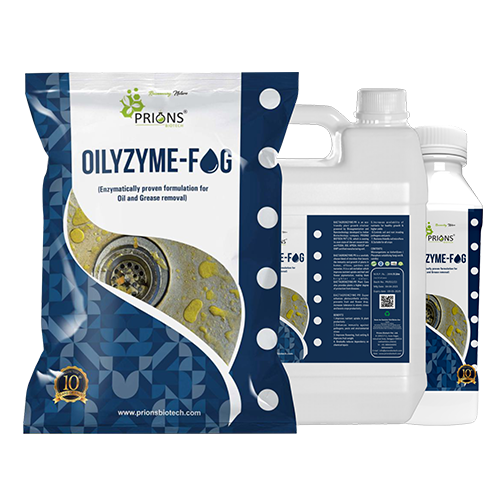
Bacteria for Hotel STP Manufacturers: Bacteria for hotel sewage treatment plant (STP) manufacturers develop specialized bacterial strains for use in sewage treatment systems specifically designed for hotels. These bacteria play a vital role in breaking down organic matter, reducing odors, and treating wastewater efficiently in hotel STPs. By providing effective bacterial solutions, manufacturers help hotels meet environmental regulations, minimize the environmental impact of their operations, and ensure the sustainable management of wastewater, thus contributing to the preservation of water resources and the protection of ecosystems.
Oil and Grease Removing Bacteria Manufacturers: Oil and grease removing bacteria manufacturers focus on developing bacterial formulations capable of efficiently removing oil and grease residues from surfaces, equipment, and industrial wastewater systems. These bacteria produce enzymes that break down complex hydrocarbons, facilitating the removal and degradation of oil and grease contaminants. By offering effective solutions for oil and grease removal, manufacturers assist industries in maintaining clean and compliant facilities, reducing the risk of environmental pollution, and promoting sustainable waste management practices.

Azoto Bacteria Manufacturers: Azoto bacteria manufacturers specialize in the production of bacterial strains capable of nitrogen fixation, converting atmospheric nitrogen into forms usable by plants. These bacteria form symbiotic relationships with certain plants, such as legumes, contributing to increased nitrogen availability in the soil and promoting plant growth. By providing azoto bacteria products, manufacturers support sustainable agriculture practices, enhance soil fertility, and reduce the reliance on synthetic nitrogen fertilizers, thereby mitigating environmental impacts associated with nitrogen runoff and greenhouse gas emissions.
Bioremediation Bacteria Manufacturers: Bioremediation bacteria manufacturers develop bacterial products designed to remediate contaminated environments by facilitating the degradation, detoxification, and removal of pollutants such as hydrocarbons, heavy metals, and toxic chemicals. These bacteria possess specific metabolic capabilities that enable them to break down a wide range of contaminants, promoting the restoration of ecosystems and the rehabilitation of polluted sites. By offering bioremediation bacteria solutions, manufacturers contribute to environmental cleanup efforts, mitigate the impact of pollution on human health and ecosystems, and support sustainable development initiatives worldwide.

Rhodo Bacteria Manufacturers: Rhodo bacteria manufacturers specialize in producing bacterial strains belonging to the genus Rhodococcus, known for their diverse metabolic capabilities and applications in bioremediation, agriculture, and industry. These bacteria exhibit unique traits such as hydrocarbon degradation, nitrogen fixation, and biopolymer production, making them valuable tools for environmental and industrial processes. By providing Rhodo bacteria products, manufacturers support various applications, including soil remediation, wastewater treatment, and biotechnological processes, contributing to sustainable solutions for environmental and industrial challenges.
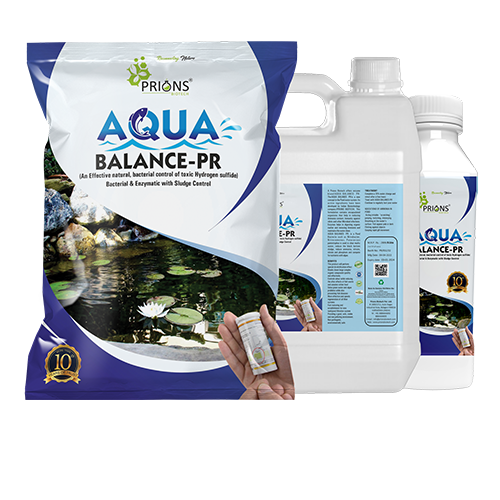
FOG Bacteria Manufacturers: FOG (Fat, Oil, and Grease) bacteria manufacturers develop bacterial formulations tailored to degrade and remove fats, oils, and grease residues in grease traps, sewer lines, and wastewater treatment systems. These bacteria produce enzymes that break down complex organic compounds found in FOG, facilitating their conversion into simpler forms that can be metabolized by microorganisms or removed through filtration processes. By offering FOG bacteria products, manufacturers assist municipalities, restaurants, and food processing facilities in preventing FOG-related sewer blockages, reducing maintenance costs, and ensuring compliance with environmental regulations.
Conclusion:
In conclusion, the collaborative efforts between microbial solution manufacturers and environmental stakeholders underscore a shared commitment to environmental sustainability and remediation. By harnessing the power of bacteria to degrade pollutants, detoxify environments, and promote sustainable practices, these manufacturers enable industries, municipalities, and agricultural enterprises to mitigate their environmental footprint and protect natural resources. As we navigate the complex challenges of pollution and resource management, the continued innovation and dedication of these industry leaders promise to drive advancements in environmental remediation, promote sustainable development, and foster a healthier planet for generations to come.
youtube
0 notes
Text
Unlocking the Power of Anaerobic Workstations: Transforming Microbial Studies
In the realm of microbiology, understanding the intricacies of microbial behavior is paramount. Anaerobic workstations have emerged as indispensable tools, revolutionizing the study of anaerobic microorganisms. These workstations provide a controlled environment devoid of oxygen, mimicking the conditions these microorganisms thrive in. This article delves into the significance of anaerobic workstations, their applications, and the transformative impact they have on microbial studies.
Understanding Anaerobic Microorganisms
Anaerobic microorganisms are organisms that thrive in environments devoid of oxygen. Unlike aerobic organisms, which require oxygen for their metabolic processes, anaerobes utilize other compounds such as nitrate, sulfate, or even fermentation to generate energy. They play crucial roles in various ecosystems, from soil to the human gut, influencing nutrient cycling and decomposition processes.
The Importance of Anaerobic Workstations
1. Controlled Environment
Anaerobic workstations provide a controlled environment where oxygen levels are meticulously regulated. This controlled setting ensures that anaerobic microorganisms are studied under conditions that closely resemble their natural habitat. By eliminating oxygen, researchers can accurately investigate the metabolic pathways and behaviors of these organisms.
2. Prevention of Contamination
Oxygen is detrimental to anaerobic cultures as it can inhibit the growth of anaerobes or even lead to their death. Anaerobic workstations create an oxygen-free atmosphere, effectively preventing contamination from aerobic microorganisms. This is crucial for maintaining the purity of anaerobic cultures and obtaining reliable research results.
3. Enhanced Research Capabilities
The use of anaerobic workstations expands the horizons of microbial research. Scientists can delve deeper into the physiology, genetics, and interactions of anaerobic microorganisms without the limitations posed by oxygen. This opens up avenues for discovering novel species, exploring symbiotic relationships, and understanding microbial communities in diverse environments.
Applications of Anaerobic Workstations
1. Medical Microbiology
Anaerobic microorganisms play significant roles in human health and disease. Anaerobic workstations are instrumental in studying pathogens responsible for conditions such as periodontal disease, abscesses, and gastrointestinal infections. Understanding the behavior of these microorganisms is crucial for developing effective diagnostic methods and treatment strategies.
2. Environmental Microbiology
The study of anaerobic microorganisms extends to environmental microbiology, where their roles in nutrient cycling, bioremediation, and wastewater treatment are investigated. Anaerobic workstations facilitate the study of microbial communities in various habitats, shedding light on their contributions to ecosystem functioning and sustainability.
3. Industrial Applications
Anaerobic microorganisms have applications in various industries, including biotechnology and biofuel production. Anaerobic workstations enable researchers to optimize microbial processes for the production of valuable compounds such as enzymes, organic acids, and biofuels. This paves the way for sustainable bioprocessing technologies with reduced environmental impact.
Conclusion
Anaerobic workstations have revolutionised microbial studies by providing researchers with the tools to unlock the secrets of anaerobic microorganisms. From understanding their physiology to exploring their diverse applications, these workstations have paved the way for groundbreaking discoveries in microbiology. As technology advances and our understanding of anaerobic microorganisms deepens, the potential for innovation and discovery in this field continues to expand.
1 note
·
View note
Text
Solar-Powered Microbes Market Research Detailed Forecast | BIS Research
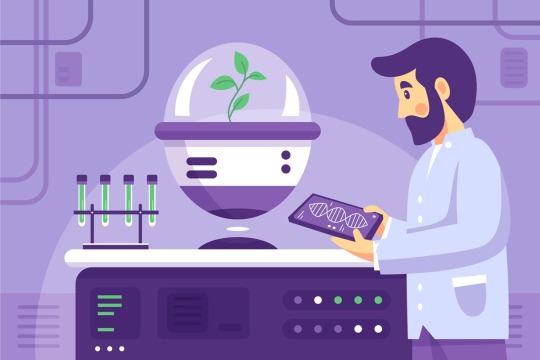
In the realm of renewable energy and sustainable technologies, the Solar-Powered Microbes Industry is emerging as a frontier where innovation meets ecological responsibility.
Unveiling Solar-Powered Microbes: A Green Energy Revolution
Solar-powered microbes represent a groundbreaking intersection of biology and renewable energy. These microscopic organisms, fueled by sunlight, hold the promise of transforming sunlight into usable energy through various biological processes. As the global focus intensifies on clean energy alternatives, solar-powered microbes are becoming pivotal players in the quest for sustainable power sources.
The use of Solar-Powered Microbes Market in the food and feed industry is expected to grow significantly in the near future. The demand for solar-powered microbes from end-use industries, namely, wine, bakery, dairy, and probiotics, is increasing rapidly.
Key Components Driving the Market Growth
Photosynthetic Marvels:
Solar-powered microbes primarily harness energy through photosynthesis, a natural process where sunlight is converted into chemical energy.
Photosynthetic microbes, such as certain algae and cyanobacteria, play a central role in capturing solar energy and converting it into usable forms.
Biophotovoltaics Advancements:
Biophotovoltaics, a technology utilizing solar-powered microbes, has gained attention for its potential to generate electricity.
Researchers are exploring ways to enhance the efficiency of biophotovoltaic systems by optimizing the interactions between microbes and electrodes.
Microbial Fuel Cells:
Solar-powered microbes contribute to the development of microbial fuel cells, where microbes generate electricity through metabolic processes.
This technology holds promise for decentralized energy production, particularly in remote or off-grid locations.
Environmental Remediation:
Certain solar-powered microbes participate in environmental remediation by utilizing sunlight to break down pollutants and contaminants.
This dual-purpose application aligns with the market's emphasis on sustainable energy solutions and environmental stewardship.
Get Free Detailed Report on Solar-Powered Microbes Market Research.
Applications Shaping the Solar-Powered Microbes Market
Biophotovoltaic Energy Generation:
Solar-powered microbes are pivotal in biophotovoltaic systems, offering a unique approach to generating electricity through biological processes.
This application holds potential for sustainable energy production in diverse settings.
Microbial Fuel Cells for Off-Grid Solutions:
In regions lacking access to traditional power infrastructure, microbial fuel cells powered by sunlight and microbes provide a decentralized energy solution.
Applications range from small-scale devices to larger installations, offering off-grid communities access to clean energy.
Environmental Cleanup and Bioremediation:
Solar-powered microbes contribute to environmental remediation efforts by breaking down pollutants and contaminants in soil and water.
This application aligns with the market's dual commitment to clean energy and environmental sustainability.
Challenges and Future Outlook
Efficiency Enhancement:
Researchers are actively working on enhancing the efficiency of solar-powered microbes to maximize energy output.
Overcoming limitations related to scalability and optimization remains a focus for future advancements.
Technological Integration:
Integrating solar-powered microbial technologies into existing energy infrastructures poses challenges.
Research and development efforts are underway to streamline integration and ensure seamless compatibility.
Conclusion: Toward a Solar-Powered Future
The Solar-Powered Microbes Industry stands at the forefront of a green energy revolution, where microscopic organisms become catalysts for sustainable power generation. As research and technological advancements continue, the market holds the potential to redefine how we harness the sun's energy for a cleaner, brighter future. From biophotovoltaics to microbial fuel cells, solar-powered microbes are illuminating a path toward decentralized, environmentally friendly energy solutions.
The journey towards a solar-powered future is not only underway; it is being powered by the smallest and mightiest contributors – microbes fueled by the sun.
#Solar-Powered Microbes Market#Solar-Powered Microbes Report#Solar-Powered Microbes Industry#Solar-Powered Microbes Industry Analysis#Solar-Powered Microbes Market Research#Solar-Powered Microbes Market Growth#Solar-Powered Microbes Market Forecast#BIS Research#FoodTech
0 notes
Text
Bacillus velezensis Unveiling the Versatile Microbial World
In the quest for sustainable agriculture, one product stands out as a beacon of innovation and hope: NOVOBAC's Bacillus velezensis powder. This remarkable product harnesses the power of beneficial soil bacteria to offer a natural, effective solution for plant pathogen control, soil health improvement, and crop yield enhancement. As we delve into the world of Bacillus velezensis, it becomes clear why this microbial marvel is being hailed as a hero in the microbial world.
Bacillus Velezensis: The Hero Product in the Microbial World
Bacillus velezensis, a gram-positive, rod-shaped soil bacterium, is renowned for its biocontrol activity against a wide array of plant pathogens. Its non-toxic nature and compatibility with other management practices make it an invaluable ally in the garden and agricultural settings. NOVOBAC, a leading bacteria and fungi fermentation manufacturer, offers this powerful antifungal plant spray in a convenient powder form, making it accessible to farmers and gardeners aiming for higher productivity and sustainability.
Broad-Spectrum Biocontrol Activity
NOVOBAC's Bactonus, which contains Bacillus velezensis, showcases remarkable biocontrol activity against a wide range of plant pathogens, including Botrytis cinerea, various Fusarium species, and Sclerotium rolfsii. This broad-spectrum antagonistic activity is crucial for managing diverse plant diseases in gardens and agricultural settings, making it a versatile and indispensable tool for farmers and gardeners.
Enhanced Plant Growth and Soil Health
Beyond its pathogen-fighting capabilities, Bacillus velezensis promotes plant growth and development by producing plant growth-promoting substances such as auxins, cytokinins, and gibberellins. It also improves soil health through bioremediation, breaking down pollutants and enhancing the growth of beneficial soil bacteria. These multifaceted benefits contribute to healthier crops and more fertile soil, laying the foundation for sustainable agriculture.
Induction of Systemic Resistance
One of the standout features of Bacillus velezensis is its ability to induce systemic resistance in plants. This means it activates the plant's own defense mechanisms, making crops more resilient to pathogens and environmental stress. This proactive approach to plant health is a game-changer, offering long-term benefits and reducing the need for chemical interventions.
Safety and Environmental Compatibility
NOVOBAC's product is non-toxic, biodegradable, and safe for humans, animals, and the environment. Its compatibility with other management practices and its ability to reduce reliance on synthetic pesticides align with the growing demand for eco-friendly agricultural solutions. This safety profile makes Bacillus velezensis an attractive option for organic farming and for consumers concerned about chemical residues in food.
Ease of Application and Efficacy
The product's formulation as a wettable powder allows for easy application via sprayer, irrigation system, or drench, ensuring that it can be integrated seamlessly into existing agricultural practices. With an application rate of 2-3 kg per acre and the recommendation for preventative use, it offers a practical and effective solution for disease management and crop enhancement.
Robustness and Stability
Bacillus velezensis thrives in a moderate temperature range (15°C to 35°C), which covers most agricultural environments. This adaptability, combined with a 24-month shelf life and resistance to various environmental stresses, ensures that the product remains effective and viable under a wide range of conditions.
Economic Benefits
By reducing crop losses and increasing yields, Bacillus velezensis directly contributes to the economic viability of farming operations. Its ability to improve soil health and promote sustainable farming practices also has long-term economic benefits, including reduced input costs and enhanced crop quality. In conclusion, Bacillus velezensis from NOVOBAC is not just a product; it's a revolution in agricultural biotechnology. Its comprehensive benefits, from pathogen control to plant growth promotion and soil health improvement, make it an indispensable tool for farmers and gardeners worldwide. As we embrace this microbial marvel, we step closer to a future where sustainable farming is not just a goal but a reality.
0 notes